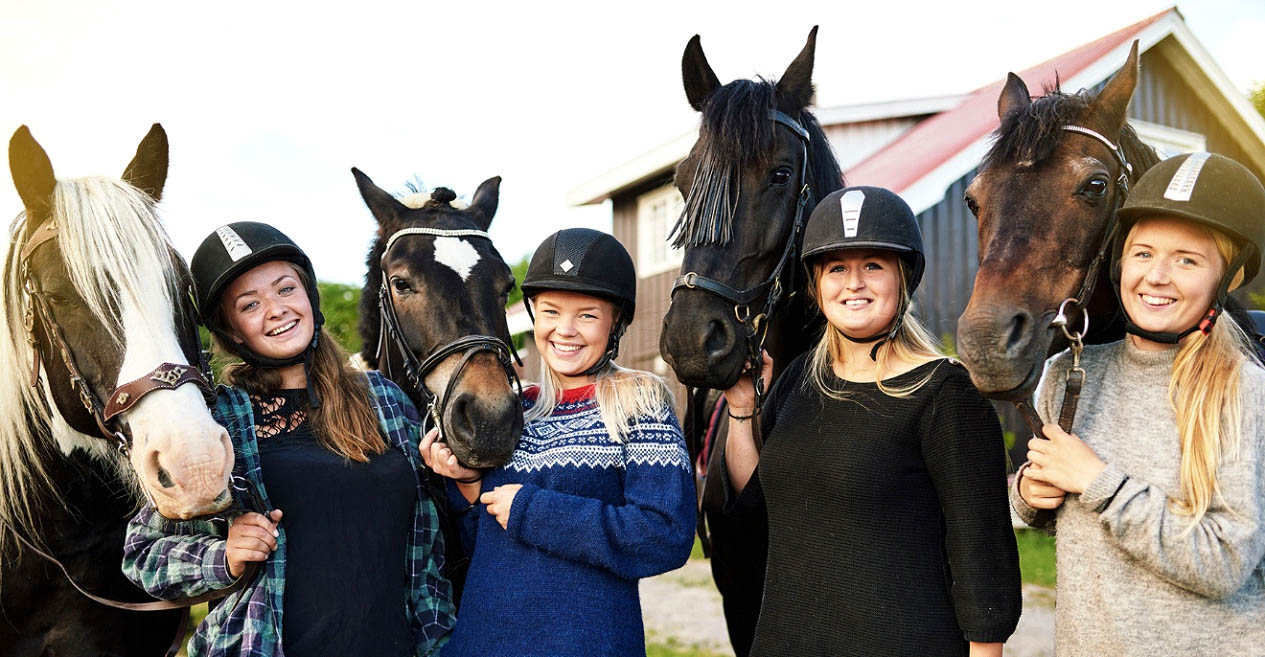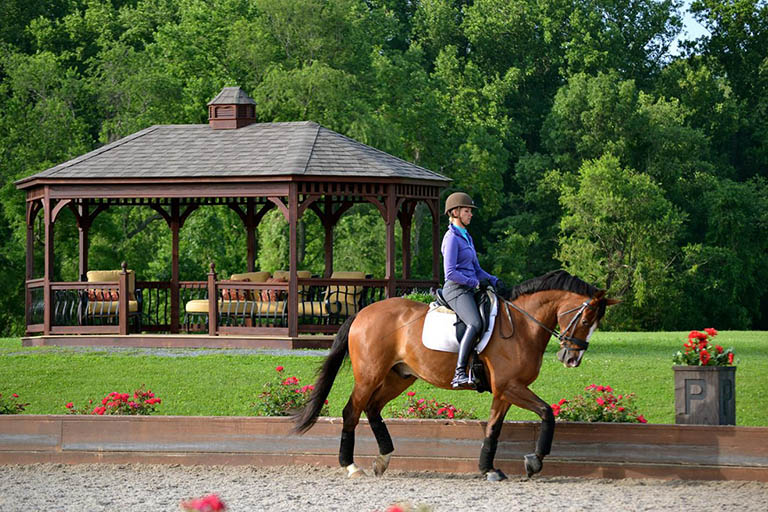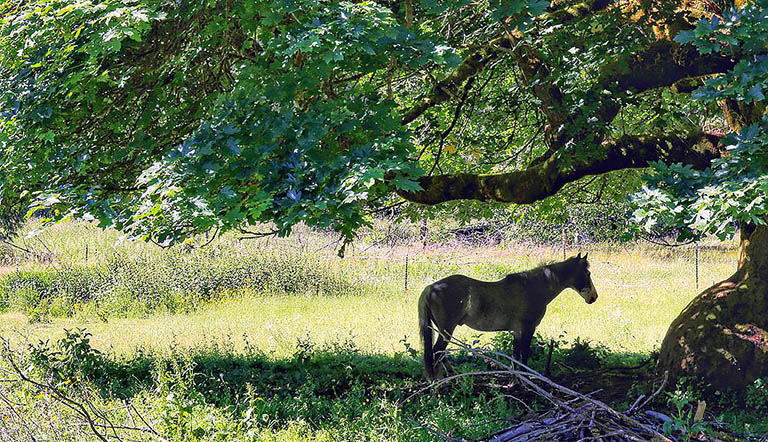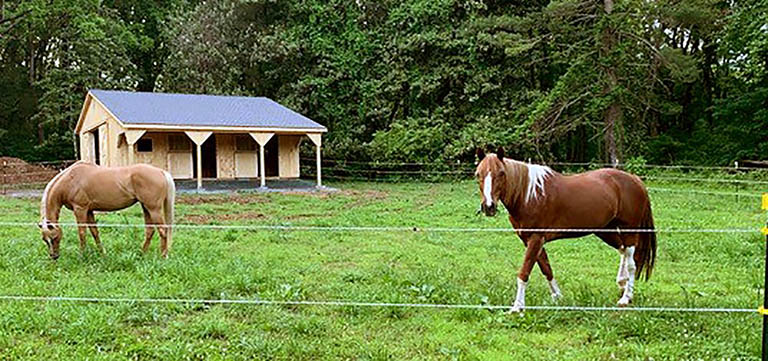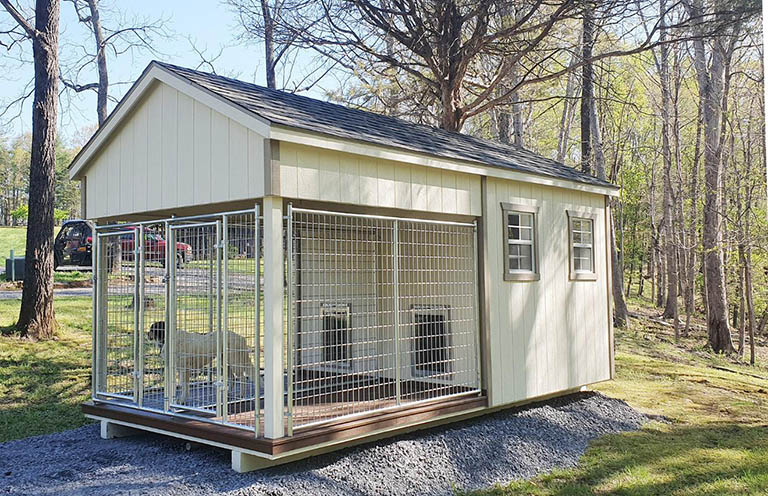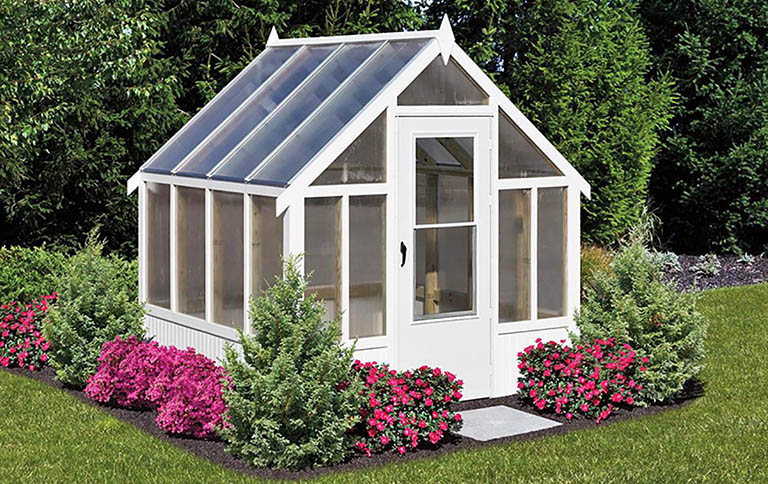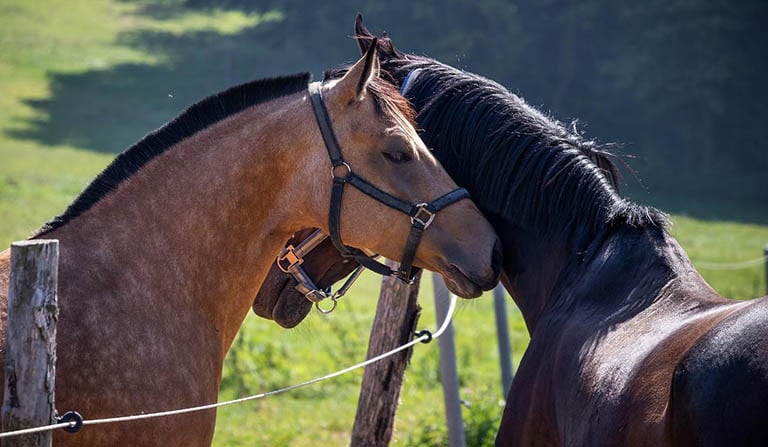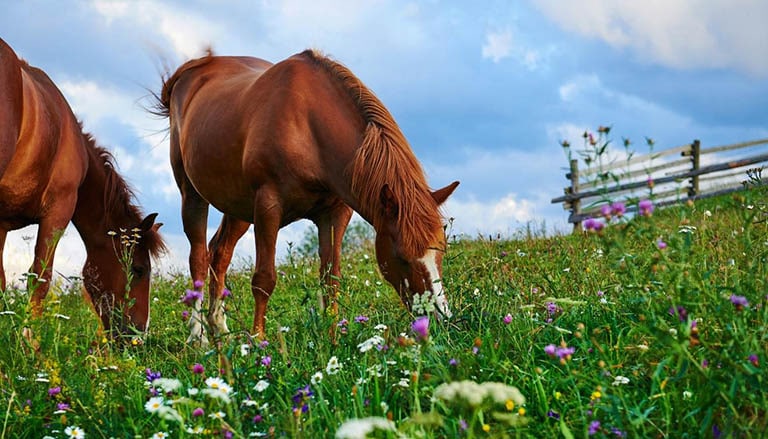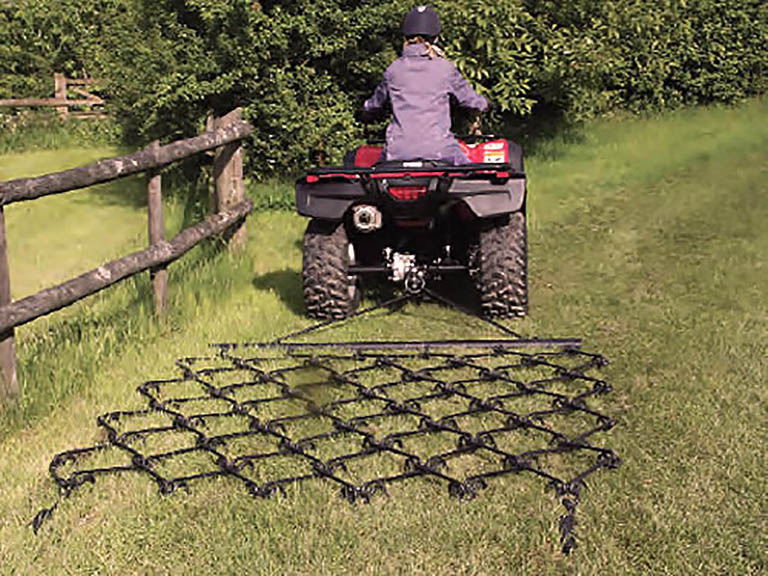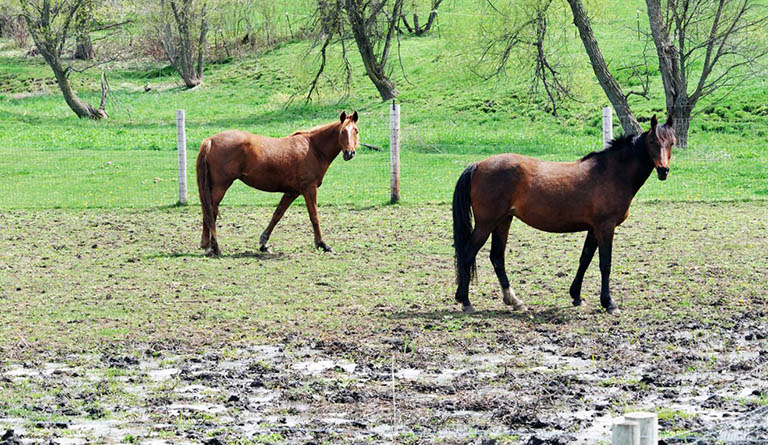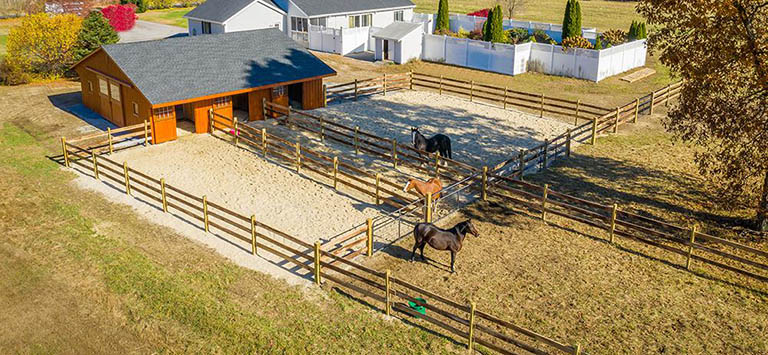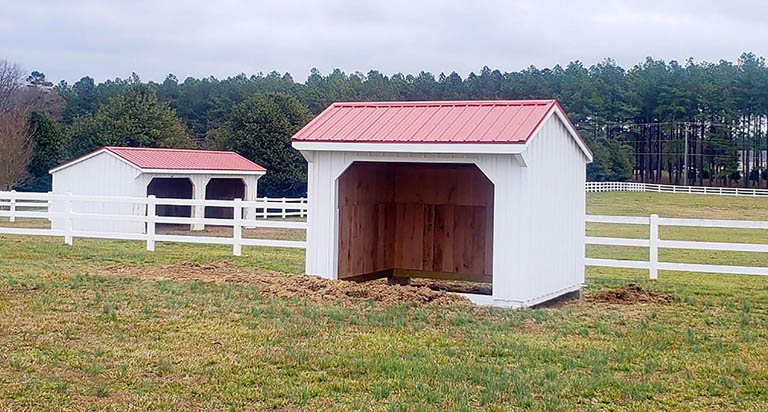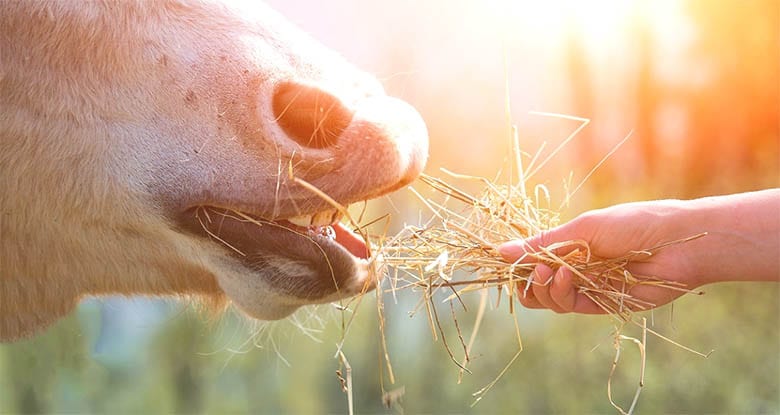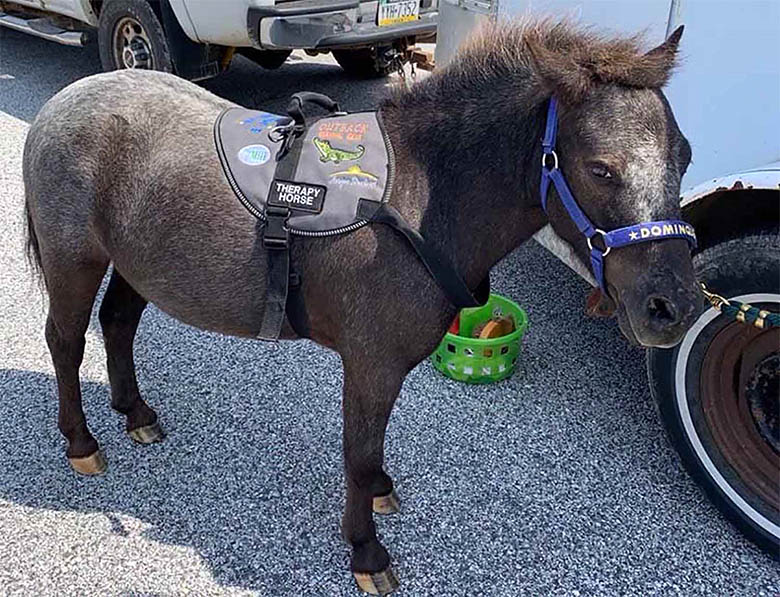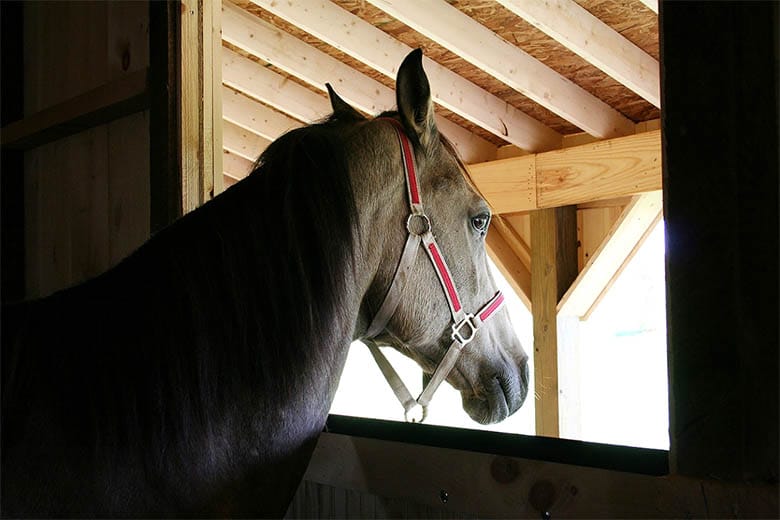A barn buddy can help to free up valuable extra time in your schedule. Here are some tips on how to become the ‘best barn buddy ever’.
Continue readingHere Comes The Sun – But It’s Not Good For Everyone
Everyone loves to spend time in the great outdoors. As Spring returns, the bountiful benefits of the sun’s rays bring joy to the hearts of horses and humans, especially to the winter weary residents of colder climes.
But the sun is not good for everyone. Staying sheltered out of the heat and burning beams can be especially important for creatures great and small, especially the young, the elderly, the fair-skinned and the cancer prone. Here are some shade ideas that offer economic methods to address the issue of too much sun.
Give A Horse A Choice
The shade of the spreading chestnut tree may work in poetry for Longfellow (actually it was rather appropriately a horse chestnut tree that shaded the smithy), but it’s not so brilliant as a shelter for horses in a large open field. Even if we forget the risk of lightning strike during a storm, the presence of large trees within a pasture that are neither harmful to horses due to possible ingestion of their toxic fruit, seeds, leaves, or bark are few and far between. It’s a good idea to research the species of trees that can be safely left to grow or planted in a horse pasture.
A hedge provides almost no benefit in regard to avoidance of the sun’s rays, save for a limited period of possible shade provision early morning or at sunset, neither time being particularly helpful as these times are certainly not the hottest part of the day.
The sun climbs high in the sky during summer months, and avoiding its harsh focus is impossible without a roof under which to take sanctuary.
For the horse, the option of walking freely out of the paddock directly into a cool horse stall through a Dutch door is heaven indeed. Not only does the sun disappear from view, the incessant buzzing and biting insects usually halt at the doorway and ‘buzz off.’ A double win.
The center aisle barn with its exterior ingress/egress from stable to paddock is an extremely popular solution to the sun/shade question. Equine caregivers can work comfortably within the outdoor shade structure, while horses enjoy the freedom of choice between inside and out.
But not every horse owner enjoys the convenience of a center aisle barn. Low profile (a surprisingly excellent economic choice) or high profile design with loft space or high ceilings that offer excellent passive ventilation with the addition of gable, soffit and/or ridge venting on the roof both adeptly address the need for refuge from the sun for horse and human, but there are many other options from which to choose.
Large equine operations necessarily require large pastures for turn out and/or multiple paddocks that are not adjacent to the main barn. The provision of a run-in shed, carefully placed with its open side away from prevailing winds and away from direct sunlight during the hottest part of the day, will be a welcome retreat for the equine occupants of the field and be heavily utilized in summer as a result. Horses will actually use the shelter more in summer than in winter.
Run-in sheds should be designed wider rather than deeper for use where multiple horses share a paddock. This will mitigate the risk of a bossy horse bullying one lower in the pecking order and trapping it in the corner of the structure for intimidation/abuse.
For large herds consider adding more than one structure to avoid crowding and horses lower in the pecking order of the herd being forced to stand outside of the shelter on the periphery with no protection from the sun.
To keep annoying insects at bay, consider adding a ‘shed curtain’, and at a minimum keep the shed clean by regularly mucking it out and laying bedding such as pine shavings that will deter insects from taking up residence.
One of the cheapest methods to add shelter to any building is the addition of an overhang. The benefits of an overhang cannot be underestimated. Its presence shelters the interior of any building from the heat of direct sun, as well as driving rain or snow. If the barn access is shut off during the day, the overhang area can still provide valuable protection from the sun or inclement weather. Don’t forget the overhang!
The Dogs’ Days of Summer
Horse owners are often dog owners too. Canine care and comfort is also something to consider especially if the dog(s) are not off leash and free to choose their location.
Dogs have little protection from overheating due to their insulating coats. As their sweat glands are located in the pads of their feet and ear canals, sweating is not a major player in how canines regulate their body temperature.
Instead, a dog relies on four main methods to cool off when they become hot: Radiation; evaporation; conduction and convection. By dilation of blood vessels close to the surface of the skin and tongue the ‘hot dog’ will try to radiate the internal body heat to the outside. He will seek cold surfaces to lie down to absorb cooler temperatures (conduction) or sit in a breezy spot to transfer heat from his body to the air (convection). Panting is an effort to bring air to the upper respiratory tract to evaporate water from his mucous membranes.
All dog kennel designs benefit from an inside/outside option for freedom of movement of its canine residents. When the outside run or option, is sheltered from the sun by provision of an overhang or roofline, the dog can enjoy catching the breeze without being forced to lie down on a ‘baking cookie sheet’ of wood or steel flooring. In fact a well-designed kennel offers safety and security for your pets including protection to the animal from neighboring dogs, overhead predation if the dog is small in size, and a mischief free zone for puppies whose erupting teeth and inquisitive natures may cause excessive chewing if left alone in the house.
Incidentally, dog boarding can be a neat income producing addition to an existing horse boarding business.
The Cool and Collected Human
It is human nature to become irritable and tired when overheated. Not only does a visiting grandparent deserve a comfortable, cool space to sit and watch the equestrian endeavors, friends and family, staff and clients, and importantly your hardworking self, all deserve a happy place to take respite from the damaging rays of the sun.
Outdoor living structures are not limited to placement in fancy gardens or palatial poolside property, their historical significance as gathering places for all to enjoy is more relevant today than ever. Gazebos, pergolas and pavilions, cabanas and even a design mixture of multiple types of outdoor living structures placed together all offer significant benefits to the quality of daily life, not to mention added value when it comes time for sale of the property.
Just as with horse barn designs, modern materials can make these structures virtually maintenance free and prefabricated options abound in a myriad of styles from alpine and rustic to Miami modern.
Plan on Plant Health Too
Just as all living things require individual attention to their specific needs, all plants do not thrive with an abundance of direct sun. Vegetable growers may entice a variety of greenery in their quest for fresh produce outside in the garden. The ‘Victorian’ love of glass houses as places for dining and entertainment, flower growing finery, experimental exotic plant germination and vegetable provision for their tables, made the greenhouse a fun addition to the garden.
For the “patch to plate” personages, the provision of a small, artfully designed greenhouse does not need to be a blight on the landscape, and it might just save the tomato harvest from blight of a different sort.
Divide and Conquer – Pasture Management Tips
Are you tired of looking at weedy paddocks and dusty dry pastures? Is your current pasture management up to scratch?
Attention to pasture management is huge part of equine care. Regardless of whether horses are housed and grazed at a smallholding, homestead backyard or enjoy access to huge tracts of land available on ranch land spreads, the health of every horse fundamentally includes the need for access to grass.
Whatever the horse owner has available for their horses’ dining delights, good pasture management can make all the difference to the health of their charges.
How can you improve the pasture available? It’s simpler than you might think. Divide and conquer! Here’s a few tips to help you along:
Dividing Fences Must be Safe
Division of pastures provides many benefits to the overall quality of the grazing land. However, be aware that simply adding a line of electric wire fence down the center of an existing fenced field may not offer the best solution if you intend to pasture horses on each side at the same time. Plan for future needs when you install fence lines. While you may not intend to pasture horses next to each other right now, you may wish to do in the future.
Division of pastures between equine neighbors should always offer safety first and sturdy double fencing is a sure-fired way to eliminate the endless challenges horses will dish out to each other when bored with eating grass. The old adage, “Good fences make good neighbors,” could be applied to horses as well as humans.
The initial extra expense for double fencing versus single fencing can be cheaper than the cost of treating injuries (which could be life threatening), that may ensue when horses ‘get into it’ over a shoddy fence. Damaged fences also require constant maintenance involving additional costs in labor and material.
The Nefarious Worm Population
While most horse owners deworm their horses on a regular basis, worm resistance to equine deworming products that are currently available on the market is becoming alarmingly common. This is a topic I have personally researched and written much about. There are many resources on fecal worm counts and other methods of worm control in horses and its well worth understanding the implications of the resistance to dewormers affecting our horses’ health.
The traditional idea of harrowing pastures in Spring and Fall in colder climates, to expose worms to frost in order to mitigate their life cycles is actually not the best time to harrow a pasture, if harrow it you must. Frost does not kill all worms. Cystic stage worms require moisture to survive and the heat of a summer day is the better time to harrow as the breakdown of the cysts will deny the larvae the necessary moisture to survive.
The best method to keep down the worm population on a pasture is manure removal.
Obviously once the pasture has been mown down and harrowed over, the field should be not be grazed right away to avoid ingestion by the horse of grass stems contaminated with the various life cycle stages of worms.
The division of large parcels of pasture into smaller ones will facilitate the option to rest or fallow the affected area.
All Horse Farm Management Should Feature Fallow and Rotation Methods
Overgrazed land offers significant health issues to horses of all ages and not just in regard to worm counts. It can also trigger metabolic disorders, particularly when the grass becomes very short. This is especially common in older horses and certain breeds of equines prone to such health issues and the Fall season brings with it a particularly risky period for horses subject to these disorders due to the high sugar content of short grass.
Overgrazed land also gives the soil and grasses no time to recover. Bald patches of dirt will quickly become overrun with weeds that can quickly spread via rhizome activity. A horse may avoid ingestion of a toxic weed or plant if it is not dry and is in full growth, given it has access to plenty of other more palatable grazing options. But when a horse is hungry and choice of grazing is limited, the weeds or other noxious invasive flora are much more likely to be ingested.
An overgrazed, weedy pasture is not just unsightly. It can quickly turn to mud during Spring rains, and thus provide the perfect environment to encourage health issues for the equine occupants such as mud fever, pulled tendons and ligaments, not to mention a giant grooming headache.
Fields Need Feeding Too
Before the pasture becomes overwhelmed with horse traffic it is wise to rest it. Removal of the avid equine grazers to another space, soil testing and replenishment of the land by feeding it appropriate nutrients to keep it pH optimized for grass growth based on science, will keep the pasture healthy for further use.
Diligent management of the fields before bare areas of ground appear and grass becomes overgrazed is actually cheaper in the long run than waiting until the damage is done. Grass reseeding, overseeding and even weed eradication all cost considerably more than a lime or fertilizer feeding of the soil. Seek advice from your local extension office or farming cooperative for soil testing, ground preparation and horse pasture seeding and care and be prudent about what chemicals or additives you introduce and ensure there is no likelihood of lingering toxicity in the pasture that would affect the health of the horse.
Herd Management
Difficulties with herd management are easily averted with the provision of multiple paddock/pasture division options. Behaviors such as an overly zealous gelding’s attention to a mare, infighting between mares coming into season, an older horse being bullied by a younger equine etc. can all be easily managed with separation and reorganization of the herd dynamic.
Large or Small?
If you have a horse breeding operation where you are foaling out mares each year, provision of a small turnout close to the barn is a boon as it allows easy daily access and an opportunity to observe the newborns or mothers-in-waiting close by.
Smaller pastures can also be beneficial as they can limit the movement of horses that require rehabilitation from disease or injury and are useful for the turnout of new arrivals, where time is needed to acclimate to an unfamiliar environment.
Larger pastures will be required for larger herds of horses, and are often set a distance away from the barn if 24 hour turn out is provided and daily in/out handling is not needed. A minimum of an acre per horse is the general recommendation, although this all depends on the quality of the soils and pasture.
Dry lots can also be incorporated into the field design for horses with metabolic issues or diseases that require limited or no access to grazing such as laminitis, Cushing’s disease etc.
There are a multitude of products available on the market to surface the dry lot that will keep it dust and mud free throughout all weathers. This can alleviate the risk for sand colic and mitigate other health issues than can arise in a dry lot such as deep mud.
A paddock set apart from the other paddocks for quarantine purposes is also a useful adjunct to a barn pasture set up.
Weather Worries
Regions of the country that experience heavy snowfall or inclement weather provide challenges for horse care with snowbound paddocks and access for feeding.
Paddock gates set higher than ground level to facilitate opening without the need to plow, compacted gravel/stonedust surfaces in and around the entrances to the turnout space and multiple pastures fanning out from the main barn area can be helpful in providing easy ingress and egress during challenging weather.
The Need For Shelter
It should go without saying that all pastures large and small, should offer more shelter for the equine occupants than that provided by a large ‘lightening attractive’ tree or hedgerow.
Run-in sheds should be placed with their front, open side away from prevailing winds.
Some prefabricated run-in sheds offer tow hooks on each end of the structure that are extremely useful for moving the building around with a tractor if it becomes necessary in the future.
It is always safer to go wider rather than deeper in run-in shed design. This will help eliminate one horse being able to bully a compatriot by confining it to a corner of the structure. The same reason curves on fenced pastures are better than corners when it comes to horse safety.
If you have a big horse herd it is better to add multiple run-in sheds versus one extra large one. These structures will offer a retreat for horses lower in the pecking order from dominant ones within the equine group.
Placement of the run-in sheds should also be carefully considered. If placed in the center of the fields away from fence lines, the structure will be accessible by the horses on every side. Thus drainage from the roof, height of the lower aspect of the roofline, and siding material used (preferably not metal that a horse can kick through resulting in significant injury), are all factors to carefully consider.
If possible place run-in shed where you can see inside the structure from the gate or entrance to the field, so your visual horse health check can be easily made without entering the pasture during the day.
Remember run-in sheds like horse barns will require regular clean out, so allow for easy access and decent proximity to your yard where available.
Horse Hay Budget Hacks – 6 Tips You Won’t Want to Miss
Purchasing & managing hay supplies for equines is one of the largest expenses in the horse keeping budget. Check out these 6 easy tips that can help cut costs.
Continue readingDominique’s Smiles – A Miniature Horse Making the World a Happier Place One Smile at a Time
Dominique the therapy miniature horse loves to visit people in the hospital. Find out more about this sweet and cute miniature horse online today.
Continue readingSpecial Need Considerations When Building A Therapeutic Riding Facility
It is essential to take these special needs requirements into account when building a therapeutic horseback riding barn. Learn more about barn construction now.
Continue reading“Women of a Certain Age” Say Hello To Horse Ownership
It is essential to take these special needs requirements into account when building a therapeutic horseback riding barn. Learn more about barn construction now.
Continue reading10 Horse Rescue Finalists Selected In The Barnfest 2020 Free Horse Barn Giveaway
As many of you already know, Horizon Structures is big on giving back to the equestrian community and regularly works with horse and animal rescues and sanctuaries, big and small. We have 10 free barn giveaway finalists.
Continue readingThe Smart Way to Build Your Dream Equestrian Facility
Build your dream horse barn with the help of these tips and tricks! Contact Horizon Structures for more expert advice on barn construction today.
Continue readingHold Your Horses – What Do You Know About Quarantining Equines?
What do you know about quarantining equines? It is important to separate sick horses from other horses in the stable to ensure your horses stay healthy.
Continue reading

